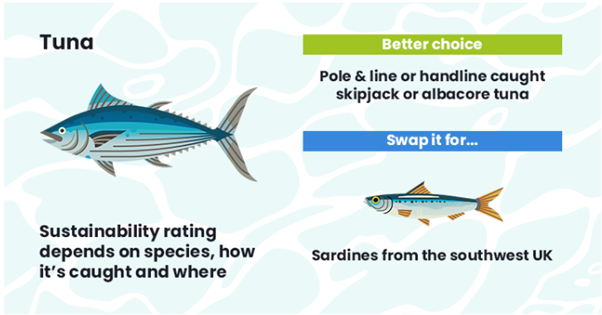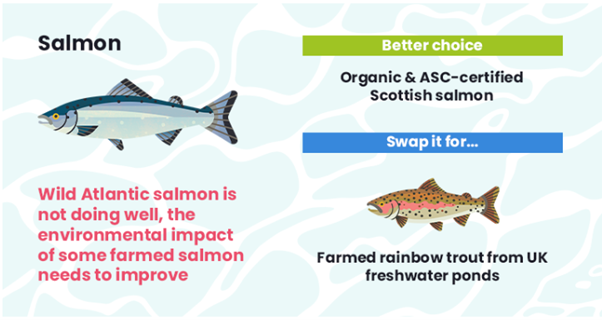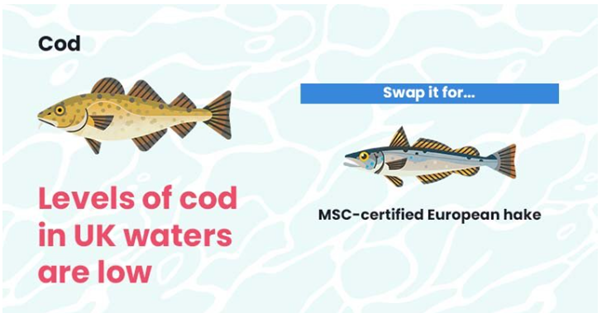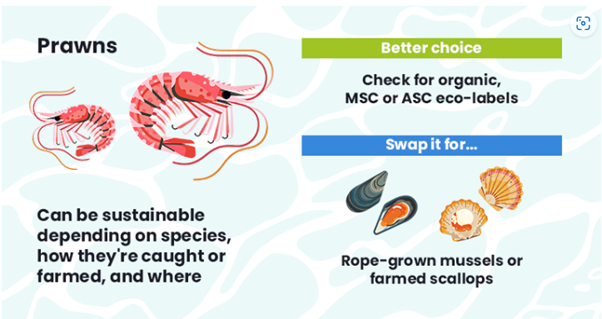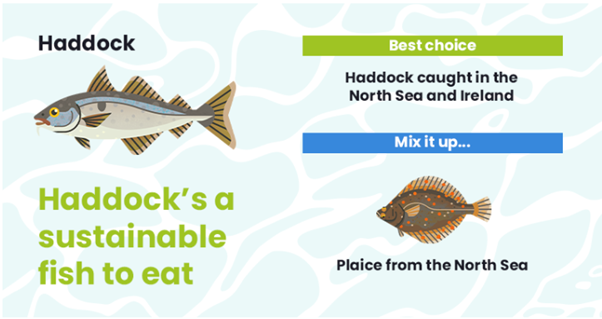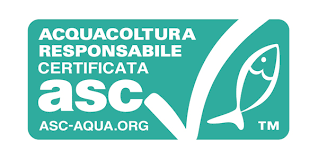Sustainable Fish
- lross842
- Aug 23, 2024
- 4 min read
Fishing is a huge industry with a lot of heritage in the Northeast. With the port in Peterhead being the biggest importer of whitefish in Europe, millions of pounds worth of fish and shellfish moves through it every year, substantially boosting the local economy and providing delicious fresh produce for the people of the Northeast. However, with various stocks (stocks being a particular population which is isolated to others of the same species) now becoming unsustainable to catch due to overfishing, how do we support an industry that means so much to Aberdeen, whilst simultaneously allowing for that same industry to thrive well into the future?
There are several ways that you can still enjoy fish in your diet, sustainably. Whether you buy your fish from the supermarket, or your local farmers market, you can find these helpful tools to make educated choices.
1) Eat Outside Of ‘The Big Five’
80% of all seafood eaten in the UK is part of ‘The Big Five’. The Big Five are the five types of fish and shellfish that are the most commonly eaten species in the UK. These include;
- tuna
- salmon
- cod
- prawns
- haddock
These species are the most popular to eat in the UK, and with high popularity, there is high demand which can lead to overfishing. Luckily for us though, there are so many other delicious species to choose from! Species such as sole, monkfish, whiting, mackerel, sardines, plaice or sea bass are all wonderful examples of other fish available in the UK to eat. By eating these other species, this allows for stocks of 'the Big 5' time to replenish but also offers variety and choice for you!
If you are looking to replace your typical fish with similar, the MSC recommend the following more local, and more unusual, swaps. Swipe below for more:
2) Use The Good Fish Guide from Marine Stewardship Council
Not only is it important to think about what type of fish you’re eating but also where it was caught, and how. If you want to look a little further into it, you can use The Good Fish Guide from MSC! The Marine Stewardship Council is an international non-profit organisation and the leading authority on fish sustainability with an aim to stop overfishing. When it comes to buying responsibly, it is important to think about what, where and how.
What: what species of fish/shellfish are you buying. Is it one of ‘The Big 5’?
Where: where it was caught. Has the stock been overfished?
How: how was it caught. Was it pole and line caught, trawled or caught in a gill net?
Luckily for us The Good Fish Guide from the Marine Stewardship Council is a fantastic resource that does your thinking for you. With the Good Fish Guide, you can discover if the fish you are looking to eat is considered sustainable or not, conveyed in the Good Fish Guide rankings. The criterion for the ranking takes into consideration the above what, where and how criteria and comes to a decision on if the stock is overfished. From that, the fish is given a ranking from 1 to 5 with 1 being Best Choice and 5 as Avoid. This guide can be used wherever you buy your fish, be that the local fishmongers or the supermarket, all you need to know is the species, where it was caught and how!
Check out the guide here; https://www.mcsuk.org/goodfishguide/ and get researching!

3) Look For Certification Labels
A quick and simple way to check if your fish was sustainably caught (or farmed!) is to look for certification labels. A prominent and important label to look out for is the 'blue tick' from MSC, the organisation that brings us the Good Fish Guide! With over 1500 MSC certified products in the UK and Irish markets there is plenty to choose from. To find out more about MSC and the work they do, check out their website here: https://www.msc.org/uk.

Some other important certification labels to look out for include labels that focus in particular on farmed fish;
ASC, Aquaculture Stewardship Council
- find out more here: https://asc-aqua.org/
RSPCA Assured
- find out more here https://www.rspcaassured.org.uk/about-us/
Global Aquaculture Alliance, Best Aquaculture Practices (GAA BAP) - find out more here: https://www.globalseafood.org/
Organic as certified by the Soil Association
- find out more here https://www.soilassociation.org/certification/aquaculture/
The use of certification labels allows for a quick scan and reassurance that the claims of sustainability have been verified so you know that what you’re eating is good for you and the planet!
4) Don’t Be Afraid of Farmed
Farmed fish has had a fearful reputation in recent years, what with the teething issues of an emerging industry. Some fish aren’t available commercially wild caught, however, and so rely on farms to make up for the demand. A great example of this is salmon. Scotland is the third biggest producer of farmed salmon, and it is a huge industry for us as Scotland's (and the UK’s!) biggest food export. To find out more on salmon go to Spotlight on salmon | Marine Conservation Society (mcsuk.org).
Farming fish is also incredibly detailed. The use of accreditation labels mean that you know your fish have been looked after in every step of their lives. That includes the water quality, temperature and oxygen levels, the space available to them, how (and how often) they are handled, and even how they are transported so you know that what you’re eating is a quality ingredient.
We hope now that you feel confident in eating seafood in a way that's good for people and the planet. Fishing is a huge industry in the Northeast which we can all support. As always, let us know in the comments if you learned something new! Do you have a fishy go-to recipe? Have some hints and tips for us? Get in touch!
![[winner of staff vote] GCGF Gold Logo.png](https://static.wixstatic.com/media/fdfd15_020333628b294a4da381b53e5483386b~mv2.png/v1/fill/w_134,h_132,al_c,q_85,usm_0.66_1.00_0.01,enc_avif,quality_auto/%5Bwinner%20of%20staff%20vote%5D%20GCGF%20Gold%20Logo.png)


